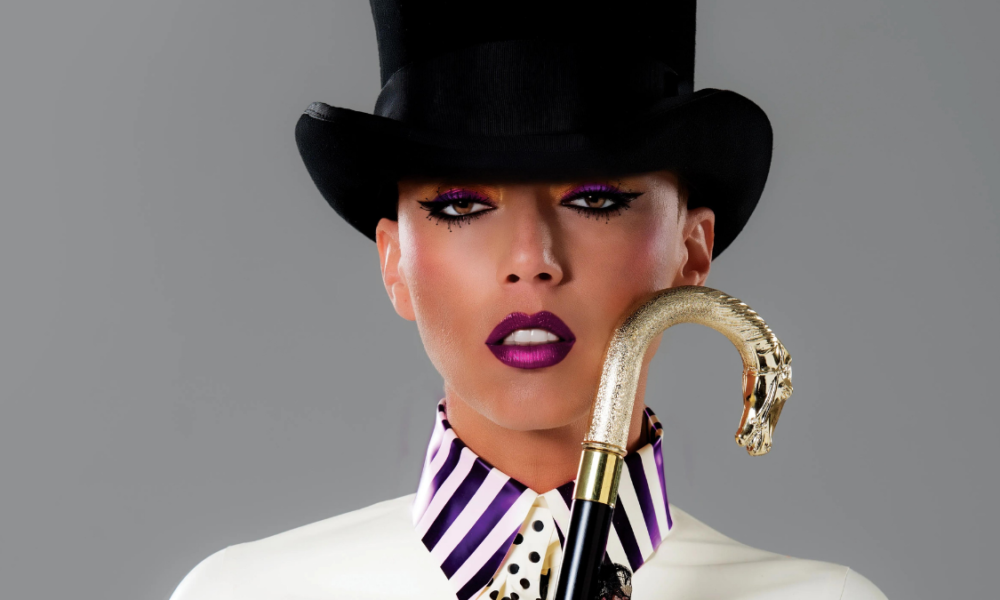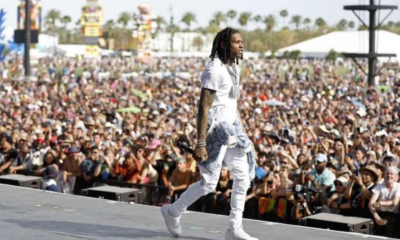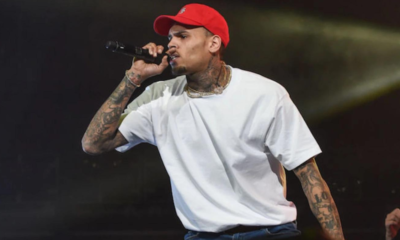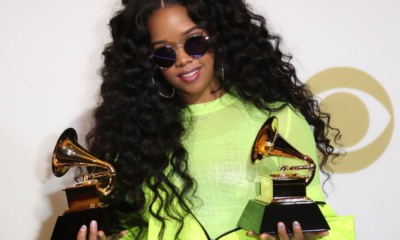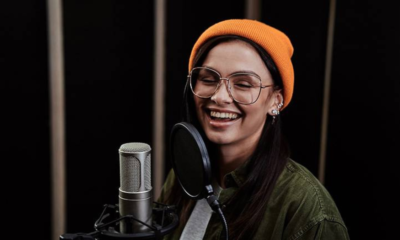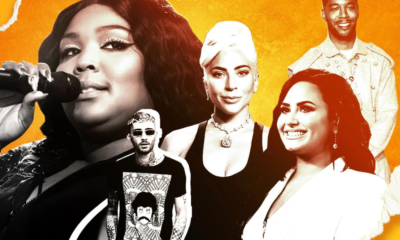Business
DESSY DI-LAURO
“I’m a lot more playful on stage, and it’s more of an acting thing that I do. It’s not really like theatre, but I’m very animated…”
Published
2 years agoon
By
Contributor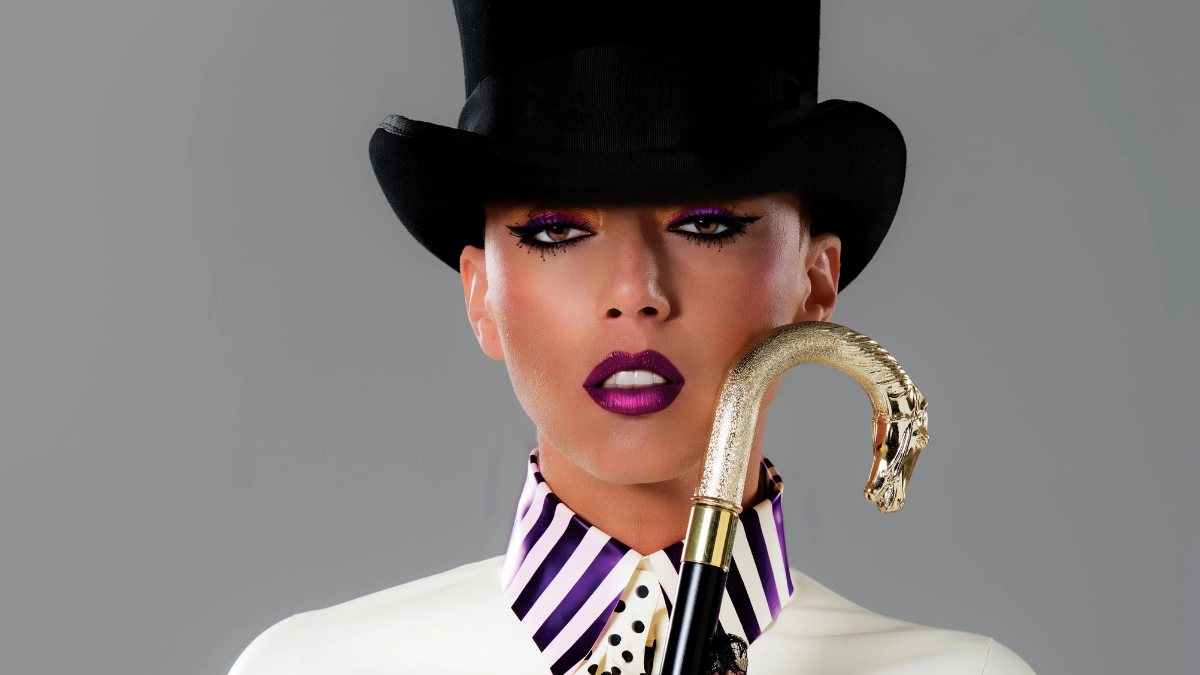
When you can’t slot an artist into a single, specific genre, you know that you’re dealing with a unique and creative musician. In harmonizing the sharp beats of 1920s jazz and retro with a thumping R&B groove, Dessy Di Lauro and her partner Ric’key Pageot fit the bill! The duo created a fresh, unique sound that’s rich with history and culture, dubbing it as “Feathered Frohawk Futuristic Art Deco-Centric Harlem Renaissance Hep Music.” With Dessy’s electric voice and Ric’key’s sharp production skills, the groove factor of Dessy’s latest album, This Is Neo-Ragtime, is set to full-blast and never drops for a second, giving rise to a delightfully infectious album that is sure to get you tapping and swaying along to the blare of trumpets, the stride of a piano and Dessy scatting. Dessy moved to the U.S.A. from her hometown Montreal, Canada to perform on two spectacles with the prestigious Cirque du Soleil, in-between which she released her first solo EP, A Study of a Woman’s Soul. Dessy’s single Why U Raggin, which appears on the This Is Neo-Ragtime album, won the Hollywood Music in Media Award for Best R&B/Soul Song in 2010. She currently lives in Los Angeles with Ric’key, where she regularly performs with her Neo-Ragtime Jamboree at Harvelle’s Nightclub. Her shows are eclectic productions that beam the audience to a sort of parallel universe complete with headpieces, garters, a taste of steampunk fashion and a fresh take on a remarkable period of music.
TVM: Is being a musician something you always wanted to do?
Dessy Di-Lauro: Pretty much. I would say that when I was about five years old, it’s something that you instinctively know! My mom heard me sing and put me in a choir not too long after. I got my start very early at that age. I was totally emerged in music. All I wanted to do is sing all the time and perform. I guess it showed because my mom put me in a choir not too long after that.
TVM: I read that your parents were into a lot of old school music. What kind of genres were you exposed to during your childhood?
DDL: I was exposed to so many different genres. My background is Cuban/Italian/Brazilian, and I was born in Montreal. It was a mix of all those cultures that influenced me. I listened to a lot of Bossa Nova, Salsa, and Afro-Cuban but primarily, my main influence was Gospel. I grew up in a Pentecostal home and also being in a choir, I listened to a lot of Gospel music. My mom’s favourite stuff was soul music, R&B, Gospel, and jazz so those were the main musical influences in my house. [My family] also listened to very old stuff from the 20s and 30s. Vinyl records got passed down through generations in my family. We had this incredible collection of vinyls that were from the 1920s and 1930s, like Cab Calloway, Duke Ellington, Fats Waller all this kind of old stuff also influenced me, stuff that I am now recreating and making my own through my music. I am so blessed to have had this incredible spectrum of music in my house.
TVM: So you were born in Montreal, but you went to the States to perform with the Cirque du Soleil.
DDL: Yes! I left to work with Cirque du Soleil’s La Nouba in Florida. That was my time to branch out. Being from Montreal I was supposed to know what Cirque du Soleil is because everybody else does [laughs]. I didn’t know what Cirque du Soleil was at all. I had no idea what this company did. I just thought it was some typical circus kind of thing. So when they called me and said that there was music, I [realized that I] knew some of the musicians that were in the band because they were from Montreal and I had worked with them before. [Cirque du Soleil] was looking for a hip hop singer. I was not really a hip hop singer! I sang choruses for hip hop groups, [for example] I had written music for Dubmatique and I sang on their project, but when I think of hip hop, I think of rap and it’s not my thing. So I went into the head office for Cirque du Soleil and I had a brief audition. They loved what I did and hired me. It was a pretty amazing experience with Cirque du Soleil. I’ve never worked with acrobats and I’ve never been in that kind of context, so it brought a theatrical aspect to what I do know that I integrate in my own shows. It was very good for me, it was very nurturing and I got a lot of theatrical experience out of it.
TVM: You started out with La Nouba and you later worked on Delirium with them. Performing and singing on the Cirque du Soleil stage is a very different experience than that of a singer/songwriter, and you mentioned that you did learn some things from those shows. What did you learn specifically and what are you applying to your shows right now?
DDL: I would have to say the biggest thing is playfulness and theatricals. My show is a very specific style of music, and it’s my own sound. My husband Ric’key Pageot and I, we created this sound which is a mix of 1930s Harlem Renaissance music mixed with today’s contemporary R&B, and a little bit of hip hop. We all dress up and the show, it’s an entire experience. With the Cirque, I played five different characters on Delirium. I had to change personalities for each [character]. So with all of that, it got me really comfortable to come out of myself and push myself more. I’m now taking dance lessons because there was a dance influence as well. I’m a lot more playful on stage, and it’s more of an acting thing that I do. It’s not really like theatre, but I’m very animated, so that’s what [being a part of Cirque du Soleil] brought.
TVM: Very cool! As for the sound that you created, you describe it as “Feathered Frohawk Futuristic Art Deco Centric Harlem Renaissance Hep Music”. It’s a mouthful! Can you give some insight into what sounds and elements make up your music and what makes this sound you?
DDL: My partner and I tried to figure out how to take an old sound and make it new. The ragtime influence and the 1930s influence is a lot of stride piano; it’s a certain style of piano playing. So we took that element and flipped it with heavy hip hop beats. For example, we do Cab Calloway’s “Minnie the Moocher”. We took that and threw in a really heavy hip hop beat, added a soulful voice and mixed it with a scat, which is an element that is almost inexistent nowadays. It’s done in a modern way that is true to me. I don’t copy anybody or emulate anybody. It’s truly a combination of these elements; “neo” meaning “new”, but “old” is also one of the elements. Another element is branding. It’s really important for me. My style of dress and what you see image-wise is that same combination [as my music]; it’s futuristic, but it also has all these elements of 30s. Everything is a mix of neo-ragtime, stride piano, hip hop, the heavy beats… It’s a little more on the electric side than what it used to be back then. This is a perfect mesh of the old and the new.
“…it’s always hard being the first coming up with something new. You need to feed it to people constantly and once they hear it and grab onto that, then they’ll latch on.”
TVM: So you pull from old and new, and so many different genres. Who are some of your top musical inspirations?
DDL: Cab Calloway, Duke Ellington, Luther Vandross, Whitney Houston, Sarah Vaughan, Lauryn Hill, Donnie Hathaway… Outkast and A Tribe Called Quest are my hip hop influences. That is my sound; it really is a combination of all those people in one.
TVM: How did you first start on the music path in Montreal? Did you start playing gigs and gain momentum from there?
DDL: Yes! In school, I started hooking up with friends and we started writing and playing around. I had this really natural knack of writing songs, melodies and lyrics. I kept doing that and eventually, I did a year of fashion design at LaSalle College, but I was already branching out, checking out the scene and listening to different singers. At that time, I was totally emerged in Coco Thompson. She is one of my favourite singers in Montreal. She is one of my biggest influences and she’s like a sister to me; she’s my best friend. I was so enamoured with her voice that I’d go see her every weekend. Eventually, she would start bringing me up on stage. That was how I got my beginnings. After that, it was Alan Prater, where I joined their group with Coco and started singing with CoSoul. I was aggressively pursuing it. I wanted to soak up as much as I could in the Montreal scene. There is so much talent in Montreal and I wanted it all. I needed to be a part of it. That’s how I got my start.
TVM: Fast forward to 2013, you released your second album This Is Neo-Ragtime.
DDL: Yes! The first one was Study of a Woman’s Soul which was an EP, but this one is the first sophomore full length album
TVM: It’s a production that you worked on fully by yourself with your husband Ric’key Pageot. What were some of the challenges you encountered in its coming to life?
DDL: I wouldn’t say it was a challenge because it kind of happened naturally. He’s influenced by the 30s and I’m influenced by the 30s, so we knew we had to make it fresh and new and give it a new sound. It came naturally. Neo Ragtime is our love, our passion. That’s all I want to live and breathe every day. I love performing and I love writing songs because it just comes naturally to us both. I’d say the one big challenge is after we recorded the album. [We thought], “How are we going to sell this sound? It has never been done before.” People are used to hearing what they are used to, and it’s always hard being the first coming up with something new. You need to feed it to people constantly and once they hear it and grab onto that, then they’ll latch on. So my catchphrase, “Feathered Frohawk Futuristic Art Deco Centric Harlem Renaissance Hep Music”, when people hear it, they are so intrigued that they will listen to the music, so that catchphrase was really important when sending [the album] out to different companies and different promotional websites. The 20s is a style of music that has disappeared in history. The one thing people know about the 20s is the Great Gatsby; musically, they have no clue. So we realized that we have to have a historical background whenever we introduce our music to people. We need to describe and let people know where it comes from, where the passion comes from and who the people doing it back then were. Cab Calloway was the original MC as far as I’m concerned. He was the original scatter; he was the original band leader with a whole lot of swag doing it on a whole other level. It was a musical freedom and expression that was all new back then, but has lost itself right now. People bring back 50s music, they bring back 60s music, they bring back disco music, they bring back funk, but it never goes as far back as the 20s. As far as the album, the music, and creativity that’s the fun and easy part. It’s the stuff that comes after it’s done that’s the hard part.
TVM: The first part comes naturally.
DDL: Yes! The creative part always comes naturally. Nowadays, you have to do everything as an artist, not only create. You have to have your business, marketing and social media caps on. You have to wear your branding cap. It’s not just about opening my mouth and singing and writing music; it’s so much more.
TVM: What do you enjoy writing about?
DDL: I always write personal stories or stories surrounding my friends, family or acquaintances. What I write about is always near and dear to me, and there is always a message of love. The general consensus of the album that everybody comes to me with is that it’s very empowering for women; it’s about strength, power, relationships, love, disillusionment in love… So it touches many different topics. I would say the most common thread throughout is very powerful. It’s also about my struggles as an independent artist, like [the song] “Lost in the Jungle” is about that. “Popularity contest” is [also] about that. The music industry has changed so much that talent doesn’t stand on its own anymore. You can have 2 million hits on YouTube regardless if the product is good or bad. So I talk about all that [in my songs]. I keep it personal to bring people into my world and share my experiences.
TVM: You’ve had the opportunity to work with a lot of great bands and great producers. What is your most memorable experience or performance?
DDL: Wow! That’s a great question! I may have three [amazing performances] because that’s a really hard one. I’d say one of them was in 2004. We did a Jazz Fest in Montreal that was one of my highlights.
The second one was at the Blue Note Jazz Festival in New York City. Blue Note is world-renowned; so many great legends have performed there on that stage, so it was really humbling and an honour that they would ask me to perform. The third one would be starting a residency here in L.A. It’s a full-on show we started in January 2014 and it’s been really good.
TVM: The audience must feel like they are taken back in time.
DDL: They are, but they’re also not. I tell people that it’s not a novelty thing where you feel like you’re being transported to the 20s. It really has this fresh take on it. We have a lot of people [from the audience] dance at our shows. At first, it takes them a minute to switch and say, “Okay! We can get down to this.” Visually when you see it, you get that aspect [of being taken back in time], but when the music starts, it switches.
TVM: Your performances are so high energy, how do you keep it up throughout the show?
DDL: I’ve just gotten used to the pace. Thank God I work out (laughs). Eating right, exercising, and dance rehearsals help. After the first initial shows went by, then it’s like riding a bike – it just kicks in. Some nights, I perform two sets of an hour and fifteen minutes. We’ve also already done two and a half hours straight. It’s intensive, but once you’ve done it a few times, you say, “Oh, it’s easy breezy!” I’m conditioned for it now but the day after, I’m exhausted (laughs).
TVM: Being so exhausted after a show, what do you do to stay healthy and keep your voice healthy?
DDL: I make sure that when I’m on the show, my sound is impeccable because usually, what will do me in is my high-energy band. I have a 3-piece horn section, so I need to be heard above that, and it can get pretty loud sometimes. The energy goes up and that’s a great thing, but I have to make sure that I can hear myself. The important thing, especially for up and coming artist, is don’t ever wreck your voice during a performance because that can be detrimental to your vocals for the future. A lot of singers wreck their voice during performances, and then they get nodules and they can’t sing, or have to get operated. It can ruin your career. I really make it a point to take a little more time to make sure that I can hear myself breathe on the mic so that I know that I’m not pushing to the point where I wreck my voice. Singing has to be like talking. If I’m having a conversation, it’s easy; I’m not forcing, and that’s how singing has to be.
TVM: Do you work with a vocal coach?
DDL: I don’t! I never have. My vocal training came from listening to a lot of music and emulating horns. I would copy what the horns were doing and I would copy what a vocalist was doing. I’d try to change my tone. So I never had any kind of vocal training; [I had] street training, that’s what I call it.
TVM: Do you have any kind of warm-ups or practices that you do?
DDL: For my vocal warm ups, I sing along to specific stuff, like Mariah Carey, Whitney Houston…I do some opera stuff, like Ave Maria; that’s great for technique and stretching the vocal chords out. Then, I put on a jazz song and scat to it. I do about one hour of warm ups before a show and that usually opens me up.
TVM: What do you eat before a performance or what do you avoid eating before a performance?
DDL: (laughs) I’m not one of those singers. I eat everything! I eat peas, chocolate bars… Yeah! Once my voice is conditioned, food does not affect it. What I don’t do is drink. I don’t drink until the show is over, then I will have my cognac. Anytime I drink, it dries out my throat. Drinking really affects me. [Before a show], I need to have a stick of gum and water, and I’m good to go. I can have cheese before I go on. They say that dairy products are not good, but I am not one to follow those rules. It doesn’t affect me.
TVM: I read that you used to be shy but from watching your performances, I don’t get that sense at all. How did you overcome that?
DDL: L.A. (laughs). Moving to L.A. is when I overcame my shyness because if I wanted to stand out, I needed to bring it. When I came to L.A, there was nothing but amazing talent here. The level is high, so I had to figure out fast how I was going to match that and go beyond. I had to come out of my shell fast; no thinking about it, just doing it. L.A. really changed me as a performer.
TVM: You mentioned the residency you started in January. In addition to that, what are you working on right now? What can we expect to see in the near future?
DDL: Well right now, we are working on a single. We do a cover of “Crazy” by Gnarls Barkley, but we do it Neo Ragtime. It has gotten such great reactions at our shows. After seeing the reaction and people asking for it, we decided that we were going to record it. We’re almost done the single, so be on the lookout for that probably in the fall. I will also probably be doing a crowd fundraising for an album and video release because we are totally independent. We finance ourselves and it comes to a point where it gets a little difficult to do that, so we are going to need the help. An album is in the works, probably for February 2015. There’s a lot of stuff doubling up right now, so the next six months to a year is a really exciting time. We’re looking forward to putting out a follow-up album.
Business
Why Are So Many Rap Concerts Getting Canceled?
From a handful of Lil Baby concert stops to large events like the Made in America festival, rap concerts have been getting canceled quite frequently in recent years.
Published
9 months agoon
August 17, 2023By
Contributor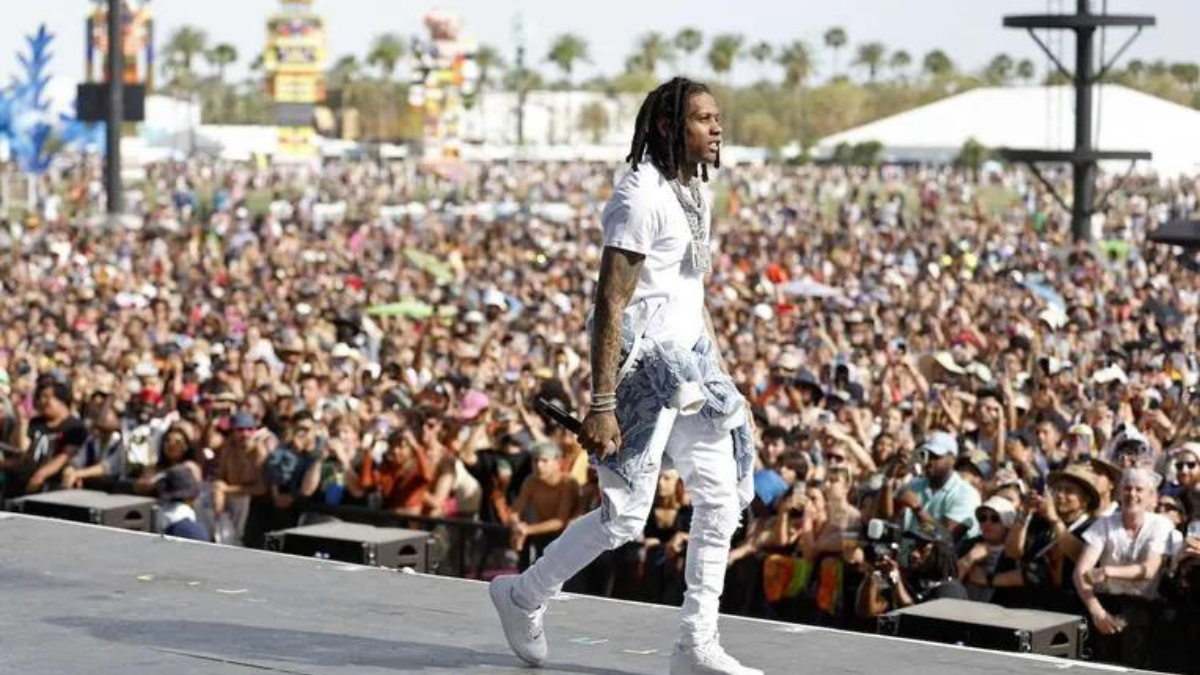



Dan Runcie


Lizzo at a concert in Minnesota (via Manitou Messenger)
Nicki Minaj’s NICKIHNDRXX Tour — canceled in North America. Chance the Rapper’s Big Day Tour — canceled everywhere. T-Pain’s 1UP DLC Tour — canceled. Cardi B’s Invasion of Privacy Tour— chose not to do one.
Touring’s traditional model needs work. Cancellations have happened for years, but this recent wave is different. Many hip-hop artists overestimate demand for ticket sales. We live in an era with endless data, but touring decisions still seem like the industry blindly throws darts. Meanwhile, artists who can sell out those same venues have proudly taken new approaches. These trends are connected.
The popularity of music festivals and concert residencies have added new variables to the live performance mix. Mainstream artists are on a quest to maximize each option. Some are farther along than others. But by the time the majority of rappers find the ideal balance, the touring business might be behind the curve.
Opportunity cost is higher than ever
When artists are on tour, they’re on the road day-in, day-out. It’s traditionally seen as a justifiable tradeoff since many artists earn a majority of their revenue from touring. But it’s still time-intensive, laborious, and costly.
Here’s what I wrote in 2018 in Why Choosing the Right Concert Venue Matters:
A few years ago, Beyoncé, like Drake, once played it safe with concert tours. In 2013 and 2014, The Mrs. Carter World Tour earned an impressive $230 million, but it took Queen Bey 132 shows and twelve months of touring to do so…
Had Beyoncé subjected herself to the same arenas for [On the Run Tour, The Formation World Tour, and On The Run II Tour], she would have needed to perform an additional 207 shows since 2014 to match the $565 million her concerts have grossed in revenue. It would have been impossible to do all those shows while pregnant with the twins, make Lemonade, and do all the other stuff Beyoncé does.
There’s only a handful of artists like Beyonce who can justify the jump to a stadium. For the rest, festivals and short-term Las Vegas residencies are a viable alternative.
But even Taylor Swift has moved on from stadium tours. This summer the 1989 singer will do a European festival run (like Cardi B did last summer), then launch her own festival, Lover Fest, in Boston and Los Angeles. It doesn’t get more 2020 than that.
In an August interview with Ryan Seacrest, she explained why she didn’t do a traditional tour:
“I’m not quite sure what we’re doing with touring. I don’t want to do the same thing every time because I don’t want my life to feel like I’m on a treadmill. There’s a lot that goes into touring that nobody knows about — like you have to reserve stadiums like a year and a half in advance, and that to me is a lot. With ‘Reputation,’ I knew that nobody would really fully understand the album until they saw it live, but this album is different because people are seeming to get it on the first listen.”
All that’s true, but let’s remember two things. First, Taylor is in a select group of artists who can sell out the Rose Bowl, Soldier Field, and MetLife Stadium on back-to-back nights. She wouldn’t forgo that opportunity unless it made financial sense. Second, she’s right about the challenge in reserving venues eighteen months in advance. It’s especially frustrating for those who rise quickly and can’t easily pivot. It’s a good problem to have, sure. But it’s still a problem.
Last year, Lizzo rose to stardom so fast that she outpaced her touring revenue. According to Billboard, last spring’s Cuz I Love You Tour was performed in front of crowds of less than 2,000 people, grossing just over $50,000 per night. To capitalize on her momentum, she came back in the fall with the Cuz I Love You Too Tour at venues that were twice the capacity. But by that point “Truth Hurts” was #1 on the charts and nominated for Grammys. She still couldn’t keep up.
My wife and her friends bought tickets for Lizzo’s October show in San Francisco. They bought tickets at face value back in May for $50. The week before her show they were selling on StubHub for $350! It was a scalper’s dream but an artist’s biggest frustration. All the value was captured by the secondary market. Sure, there’s a chance Lizzo pulled a Metallica-Live Nation and scalped her own tickets. But if that ever happened… whew buddy. The Lizzo hive (and the anti-Lizzo hive) would have burned the internet down by now.
Hip-hop has an uphill battle
The mentality required to succeed in hip-hop and touring is in direct conflict. Most mainstream rappers take pride in beating the odds. They had to bet on themselves to make it this far. Why stop now?
But touring requires far more pragmatism. It’s economics. When supply meets demand, everyone’s happy. Those economics can be especially challenging for hip-hop though, where its streaming popularity outweighs its touring performance.
In a 2018 Wall Street Journal article, Neil Shah broke down how hip-hop may rule the record industry, rock is still king on the road:
There are many reasons that rock remains so powerful on the road, including that, as an older genre, it had a head start on pop and rap. Giant tours by older rap icons like Jay-Z aren’t as common. Fans of newer hip-hop artists skew younger, including teens with less disposable cash, making festival gigs more economical than lengthy, sprawling tours.
“Drake can do four Madison Square Garden shows, but Phish can do 17,” says Peter Shapiro, a New York-based independent concert promoter. Especially in the day-to-day business of clubs and theaters, rock bands, he adds, “still have a huge impact.”
This can make it mistakenly easy for an artist who dominates on RapCaviar or SoundCloud charts to think they are ready for the biggest stages available. Of the top 10 global tours of 2019, none of them were hip-hop. In 2018, just one (Beyonce and Jay Z’s On The Run II). Genre plays a factor.
A good clip from The Joe Budden Podcast where they break down Chance’s canceled tour.
Artists bet on themselves, which is costly
Challenges arise when artists who were once the hot kid start to cool off and need to accept reality. They might not be DONE done, but their prime days are behind them.
That’s where Nicki Minaj and Chance the Rapper are at. Neither admitted that low demand drove their cancellations, but we can follow T-Pain’s humble advice and read between the lines. Several industry insiders believe that both Nicki and Chance couldn’t sell enough tickets to fill 25+ arenas across the US. (I also covered Nicki’s ticketing woes in the Globalization of Hip-Hop, Part I and Chance the Rapper’s in a recent Member Update.)
When both rappers first announced these tours, I thought to myself, “Who the hell gassed them up to think they can still command an arena tour? Who signed this off?” There are plenty of fingers to point, but honestly, neither rapper needed extra convincing.
Keep in mind, Nicki spent the past decade silencing doubters who never thought a female rapper could reach the heights she did. Chance proved the industry wrong as an indie rapper who won Grammys and did arena tours. Their brand is to stay resilient when projections told them otherwise. You wanna go back in time and try to convince them that the lackluster responses to “Chun-Li” and “Groceries” were signs of what’s to come? Yea, good luck with that.
Their mentality is understandable, but it distorts reality. And as more superstars like Taylor and Cardi consider alternatives to touring, promoters may be stretched to fill those same venues with artists who can’t compete in that weight class. It will inevitably lead to more cancellations.
There are levels to this
The traditional touring model is extremely linear. There are tons of venue options for rising rappers who want to perform for a few hundred or a few thousand people. But the leap to arenas (~15,000) is no joke. The jump up to stadiums (~50,000+) is even steeper. The artists at the in-between stages are more likely to leave money on the table or cancel because they couldn’t sell.
The popularity of festivals, residencies, and private events add more options to meet demand:


As AR/VR capabilities develop, more of them will be added to this mix too
I made a similar chart last year on how the traditional albums model has evolved with “mixtapes,” visual albums, podcasts, and more. The trend is similar here. Increased options lead to more experimentation and put artists in control.
Where is this all heading?
This trend should be top of mind for both Live Nation and AEG, which own and operate thousands of venues. It should also concern those who individually manage their venues.
I don’t expect arenas to shorten the timeline for advance booking or cancellation policies. That’s the nature of events in popular venues, whether it’s a wedding or a Migos concert. But they can lean into the trend by pitching themselves as locations for festivals, residencies, private events, or mixed reality experiences. It may be hard to compete against the machine of Coachella, but Rolling Loud and plenty of other festivals are more open to working with what’s available.
By now, every rapper with a big enough following has had at least wondered, “What if I launched my own Astroworld or OVO Fest? Should I do a Vegas residency too?” As I laid out in Why Rappers Started Running Their Own Music Festivals, artists want to leverage their power and run the show. They want the money from the highest profit margin areas of live performance, like sponsorship and concessions. It’s the same model that Floyd Mayweather uses in his boxing matches. He rents out the building and collects the revenue from everything else.
Touring will always be key for the up and comers who want to meet their day-ones. It worked for Meg the Stallion in the rooftop cypher days and Cardi B in the Love & Hip-Hop days. It will always be a core for the legacy artists who can draw crowds wherever—like Rolling Stones, Elton John, or Jay Z. But there’s a whoooole lot of artists between up-and-comers and Hov.
These artist want more options, and the market can offer them. The rest of the industry will be forced to adapt sooner or later.
READ MORE: https://trapital.co/2020/01/09/the-hip-hop-touring-business-is-broken/


Dan Runcie
Founder of Trapital
Business
CHRIS BROWN: The Top Recording Artist ALIVE [Vocal Range]
Chris Brown, American recording artist, and an actor were born in Tappahannock, Virginia to Clinton Brown a corrections officer at the local prison and Joyce Hawkins, former director of a daycare center.
Published
1 year agoon
May 13, 2023By
Contributor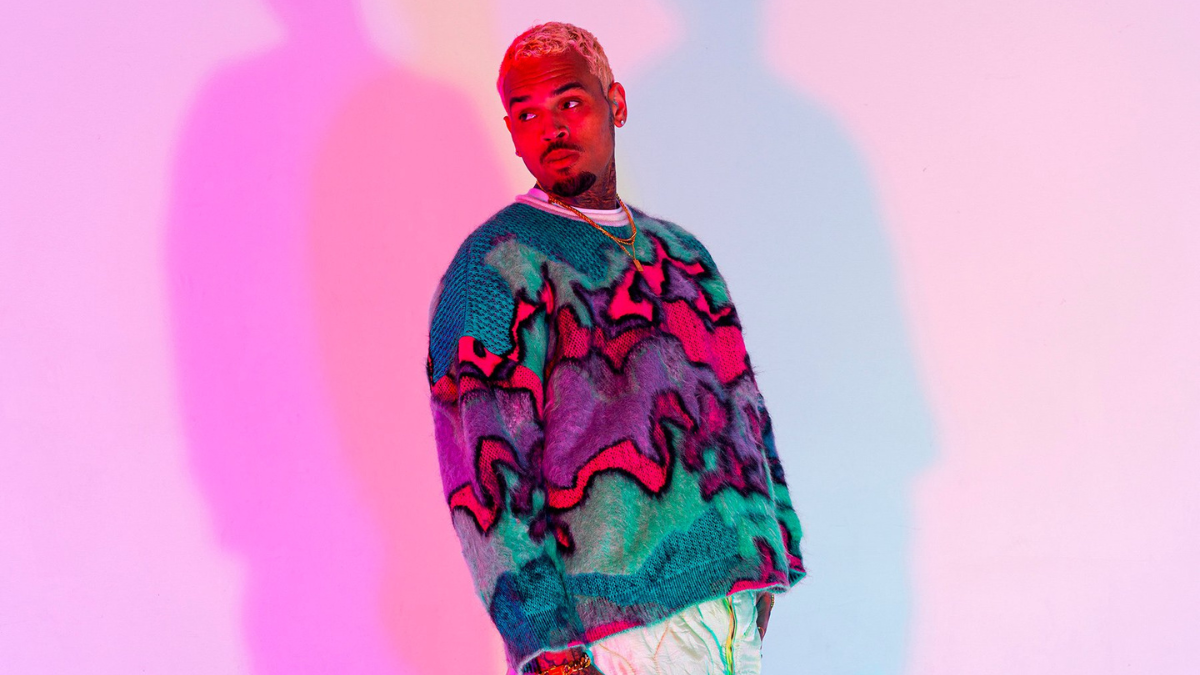

His keen interest in music and dance made him teach himself both the arts and he declares that Micheal Jackson was his role model. He also participated in the local church choir and local talent shows. His perfection in mimicry of an Usher performance made his mother realize his potential and she started looking for a record deal opportunity.


Chris Brown’s Voice Type & Vocal Range
Chris Brown has a light Lyric tenor vocal style. His vocal potential was first discovered by his mom when he was still a kid. Brown reveals to People magazine that he was 11 and watching Ushers performance ‘My Way’, and I began endeavoring to impersonate it. My mother resembled, ‘You can sing?’ And I resembled, ‘Well, no doubt, Mama.” in this way, and began to sing.
Voice Type: Light-Lyric Tenor
Range: E2-E5-G#5


Chris Brown’s voice sits high up. He has relative easiness in the fifth octave (Yeah 3x, This Christmas, Crawl). The strain really makes it difficult for him to sing there, yet he does not have much of a problem. He likewise sings to be a baritone in the E4-G4 range effortlessly.
Not so sure where this originates from, yet I have seen it many times previously. In fact, He is brighter and lighter than the spinto. Due to the fact that the spinto will have a more substantial, warmer and substantial voice. Chris’ voice is awfully splendid and light to be a spinto.
He has a light and thin voice. His voice is additionally surprisingly energetic. Thus he should be a light-verse tenor.
Achievements
At the tender age of sixteen, Chris Brown made his debut with an album titled “Chris Brown” featuring the runaway hit single “Run It”. This song topped the Billboard Hot 100 in 2005 making him the first male artist whose debut song topped the chart after Montell Jordan had achieved the same in 1995. The RIAA (Recording Industry Association of America) awarded the album a double-platinum certification and it sold more than 2 million copies in the US.
Riding on this success Chris Brown, American recording artist released his second studio album in 2007 November titled “Exclusive”. This album had two hit singles “Kiss-Kiss” featuring T-Pain and was number one and “With You” which became number two in the Billboard Hot 100 and was awarded a Platinum certification by RIAA. “The Forever edition” which is a deluxe version of his album with the single “Forever” was released in 2008 in May and this also peaked at number two position in Billboard Hot 100. “Graffiti” his third album was brought out in 2009 December and its official single “I Can Transform Ya” came up to number 20 in the Billboard Hot 100 becoming Chris Brown’s eighth hit on the charts.
Brown has other hits under his belt such as “No Air” with Jordin Sparks, “Shawty Get Loose” with Lil Mama and T-Pain, “Shortie Like Mine” with rapper Bow Wow all of which reached within number ten in the Billboard Hot 100. His dancing capabilities gave him an extra edge over other singers and he was compared to Micheal Jackson and Usher. On the negative side, Brown was given five years probationary sentence and 6 months community service for assaulting singer Rihanna. In 2010 May Chris Brown American recording artist brought out “Fan of Fan” a mixtape with Tyga and “Deuces” from this tape was released in 2010 June reaching the number one position in the U.S.
Musical Style & Influences
Chris Brown has referred to various artists as his motivation, overwhelmingly Michael Jackson. Chris Brown underlines that “Michael Jackson is the motivation behind why he involved himself in the music industry at the beginning of his music career. In “Fine China,” he represents Jackson’s impact both musically and outwardly as Britini Danielle of Ebony magazine mentioned that the melody was “reminiscent of Michael Jackson’s Off the Wall”.
And He also did mention that Usher is another role model in the music industry who seems to be a more contemporary figure for Brown. He discloses to Vibe magazine about Usher that he was the person who the youths gazed up to, in the singing and dancing world, admired him, and keeps up “If it was not for Usher, at that point Chris Brown couldn’t exist.”
Some critics suggested that Chris Brown’s first experience with R&B, perceiving his contemporary adaptions and flexibility in R&B music. As customary R&B prospered around him, the youthful singer started the development of the genre”. His first single “Run It!” as a “prelude to what Brown would keep on doing for the following decade: determinedly upset develops of blues and rhythm.
Business
TOURING AND THE SINGER
Touring artists experience a wide range of issues including physical and vocal fatigue, mental boredom, poor health…
Published
1 year agoon
May 10, 2023By
Contributor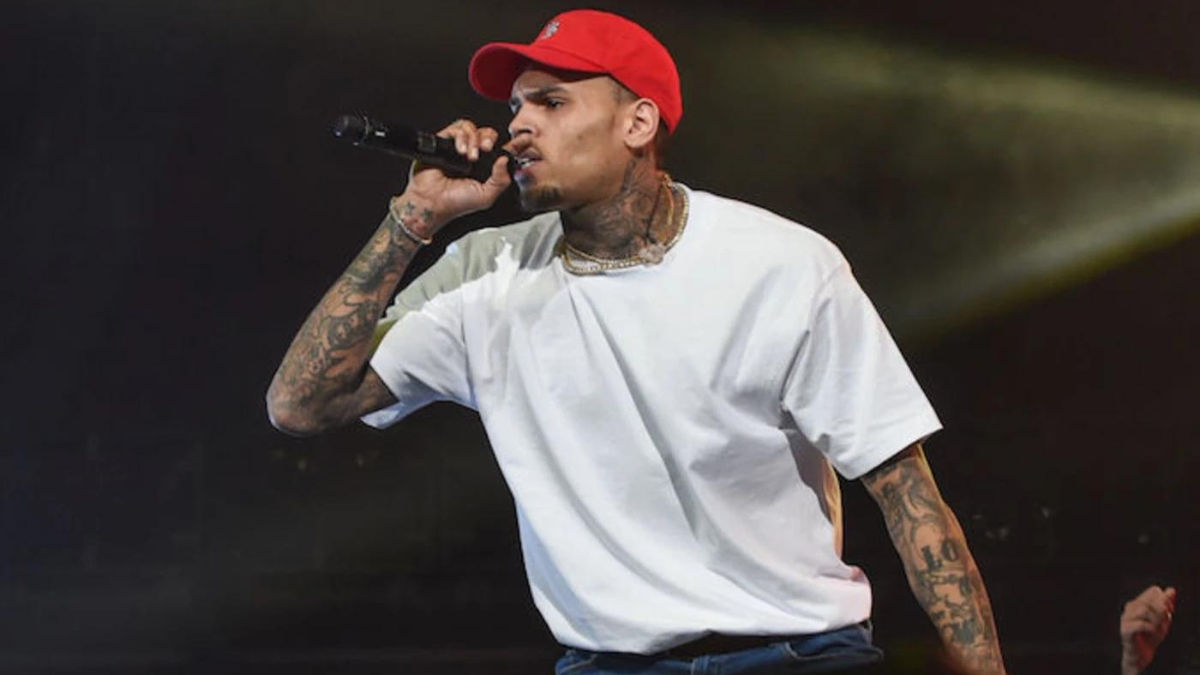

1. How important are vocal warm-ups and why?
Warm-ups are almost more important than vocal technique practice. It is vital to ensure we are getting the vocal ligaments and the intrinsic vocal muscles ready to do the job required during singing. When we talk we only use a limited range of pitches (around a major third or so) but when we sing we may use over two octaves. By warming up we are getting the different layers of the vocal folds ready to work at the higher frequencies required for singing. It is also important to get the larynx and the articulatory muscles ready to deal with singing lyrics. If we don’t get the voice ready and warmed up then we are running the risk of inducing vocal fatigue and ultimately misuse which could lead to vocal pathologies such as vocal fold oedema (swelling), nodules or polyps.
2. How important is vocal technique and why?
The reality is that there are many contemporary commercial singers with a successful career who do not have vocal technique to back their art or the vocal workload experienced as a touring singing/artist. It may be possible to get away with poor vocal technique in the short term or the studio setting, where it is possible to record as many tracks as necessary to get a good take. But when one is performing, live and touring, poor technique will eventually have a negative compound effect on the vocal folds, which increases the risk of injury. Having a well structured technical regime not only helps the singer to build range, stamina, strength and vocal control but will also help to readdress any imbalances acquired during the performance. Understanding how the voice works technically will help the singer to make the right choices when it comes to repertoire, vocal style, use of range or singing with a tired or sick voice.
When it comes to the creative side technique will ensure that the artist can realise their creative vision, to sing unhampered by limitations of vocal range, the ability to transition easily between registers, breath management, vocal tone, the ability to sustain long notes, vocal qualities and dynamic control.
3. What physical and mental effects can touring have on an artist? How can this contribute to vocal health problems?
Touring artists experience a wide range of issues including physical and vocal fatigue, mental boredom, poor health, disruption to dietary and daily routines, feelings of isolation from friends and family. Whether they are travelling in a band van, tour bus or flying, most artists suffer from disruption in sleep, daily routine, dietary habits etc. When there is a group of people travelling together in close proximity there is also an increase in risk for communicable illnesses such as colds and cases of flu. Flying may cause dehydration and vocal fold swelling due to an increase in atmospheric pressure. This may cause the voice to be husky or hoarse and limit the singer’s ability to access their upper/lower ranges. Environmental conditions such as air-conditioning, heating, humidity, dryness, altitude and cold temperatures will also impact the singer’s physical, mental and vocal health. In addition, if they are crossing time-lines then jet-lag will contribute by reducing physical and mental function. Being tired, stressed, rundown or dehydrated will impact the vocal fold’s ability to function optimally resulting in loss of range, tonal quality and sustainability.
4. Are vocal health problems more common today? Or do you think artists are more open about their health as it is mediated in the press more?
I think it is a combination of instant media and the kind of pressure, vocally and physically the current day artist is under. Pressure to ensure they sell their music and make money for their label etc. This means that they tour heavily and they are obliged to do a heavy load of publicity and networking, in turn, their voice does not get as much rest as it needs to do its job on stage night after night. Depending on the label/management tours may be more intensive with more performances packed in over a shorter period. Some labels have a policy of not allowing their artist to do more than three shows in a row, but not all artists are well looked after in this way. In the past, it would have been viewed more negatively by the public/fans if they knew that the artist was having vocal problems. Today people seem to think it’s par for the course as there is so much in the media about singers who have to cancel tours and gigs due to voice problems.
5. If there is no option to cancel a show a steroid injection may be required. What are the effects of this? Is it only temporary? Can it do more harm than good?
Steroid injections can be very effective in the short-term to help a performer get through a show. When a major artist cancels it means the loss of millions of dollars. So the management tries hard to prevent this from occurring. One-off steroid injections do not commonly have long-term medical side-effects. It only becomes problematic when this becomes a regular dose. Having an injection does carry a risk of injury if it is not done safely and accurately. High or prolonged doses of steroids (injections or tablets) will impact the body systemically e.g. excess fat distributed weirdly, prone to infections, and a risk of injury to the vocal folds such as nodules, haemorrhage or laryngitis.
Given appropriately and safely a steroid injection can save the day.
6. Are there any other ‘quick fix’ medicines that are used on tour? What are the effects?
I can’t think of any. I imagine any kind of analgesia that helps with pain might be used in some cases. Depending on the type of the analgesia will depend on the side effects. Obviously, narcotics run the risk of dependency and poor motor control. Some of the more common over the counter types such as paracetamol and codeine can cause constipation if taken regularly. Salicylates (e.g. aspirin) act as blood thinners and are not recommended for singers as a possible side-effect could be vocal fold haemorrhage.
7. Is it necessary to have surgery or will the body fight back if it’s allowed complete vocal rest?
Surgery depends on the type and severity of the vocal pathology as well as the time constraints of the artist. If there is pressure for the artist to get out and work e.g major tour, imminent album launch or significant performance then the powers that be are more likely to opt for surgery. If the artist/singer is not under such pressure or can’t afford surgery then alternative options may be considered at first.
- These days vocal nodules are generally treated with therapy and vocal technique if they are in the pre-nodular or soft stages. Some surgeons will treat hard nodules with surgery, though I have seen cases where nodules have not been surgically removed and the singer had successful rehabilitation through voice therapy and correction of poor vocal technique.
- Vocal polyps and severe haemorrhages, cysts and granulomas generally require surgical intervention. The singer is then on vocal rest for 2-3 weeks.
- Vocal oedema requires rest and addressing the cause.
- Infections and laryngitis do not require surgery.
It very much depends also on the doctor i.e. their training and experience. An ENT surgeon or ENT/laryngologist who works with singers a lot will tend to only do surgery if necessary, and there is no response to voice therapy and/or addressing the cause.
Vocal rest will help in many instances but the problem may re-occur if the cause is not addressed. Many common voice issues in singers can be dealt with through rest, rehydration, good vocal technique and a balanced healthy diet.
8. Do you think audiences have higher expectations when going to watch an artist perform? ie: Pitch, physically performing.
With the use of auto-tuning in the studio, audiences have come to expect a singer to sing perfectly. This is compounded by the impact of music videos and the use of lip-syncing, as well as the use of auto-tuning in the live setting. Having said that the general listening audience is not always focusing on things such as pitch or even lyrics, for them, it’s the experience of the live performance.
9. What is your advice for a singer going on tour?
Where possible sleep – cat naps are as useful to the body as whole night sleeps, ensure you are getting 1.5 to 2 L of water a day, take dietary supplements, avoid respiratory infections like the plague. Take your own pillow on tour, healthy snacks, eyeshades, earplugs, nebulizer with normal saline, throat massager and most importantly straws so you can do regular straw therapy.
Don’t expect your voice to be able to work optimally if you don’t look after it, excessive talking, alcohol, smoking, drugs, poor diet and late nights will prevent your voice from working to its best.
At the end of the day, this is your job and what your audience is paying for. You are the equivalent of a vocal athlete. Follow these tips:
- maintain a regular and personalised vocal exercise regime
- do warm-ups and downs before/after a performance
- if possible change repertoire, vocal range and performance energy to accommodate the days when you or your voice are fatigued
- check in regularly with a vocal coach who understands how to keep you vocally fit and healthy
- do physical exercise to ensure your body is supporting your voice.
- Keep well hydrated
- Maintain a healthy and balanced diet with supplements to boost your immune system
- sleep whenever possible
- avoid sick people!


Why Are So Many Rap Concerts Getting Canceled?



CHRIS BROWN: The Top Recording Artist ALIVE [Vocal Range]


TOURING AND THE SINGER
Trending
-

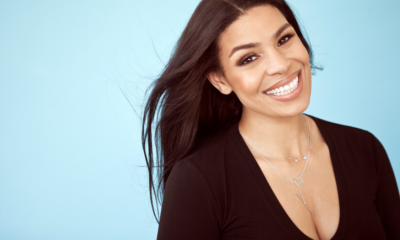

 Business2 years ago
Business2 years agoThe Day Jordin Sparks Stopped Singing
-


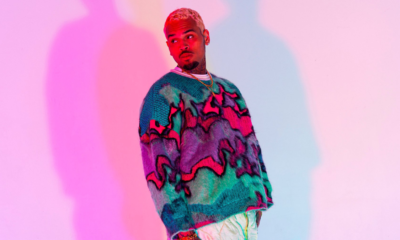


 Business1 year ago
Business1 year agoCHRIS BROWN: The Top Recording Artist ALIVE [Vocal Range]
-

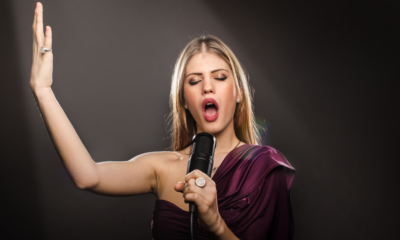

 Business2 years ago
Business2 years agoTVM-TV LIVE
-

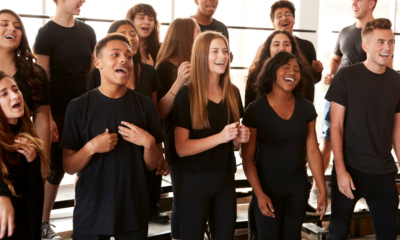

 Business2 years ago
Business2 years agoBenefits of Joining a Choir
-

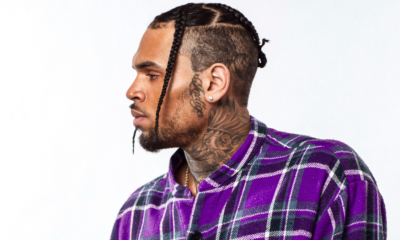

 Business2 years ago
Business2 years agoChris Brown’s 12th Studio Album “Breezy”
-

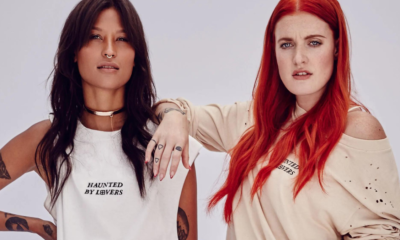

 Tech7 years ago
Tech7 years agoICONA POP
-



 Business2 years ago
Business2 years agoFood for Singers: The Diva Diet
-

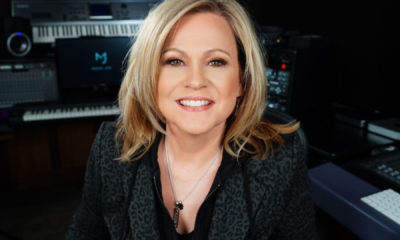

 Business2 years ago
Business2 years agoINTERVIEW WITH MAMA JAN

